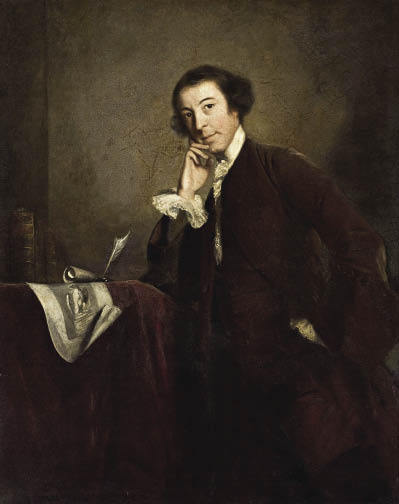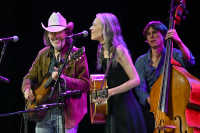Horace Walpole’s Strawberry Hill
Victoria & Albert Museum, until 4 July
‘I waked one morning at the beginning of last June from a dream, of which all I could recover was that I had thought myself in an ancient castle (a very natural dream for a head filled like mine with Gothic story) and that on the uppermost banister of a great staircase I saw a gigantic hand in armour. In the evening I sat down and began to write without knowing in the least what I intended to say or relate.’
Thus Horace Walpole related the origin of the first ‘Gothic’ novel, The Castle of Otranto, published in 1765. While several sons of prime ministers have failed to live up to their fathers’ ambitions, few have shown the imaginative sensitivity and dedication to a private imaginative world as the son of Sir Robert Walpole. If there was ever an opportunity to penetrate the mind of the most famous antiquary of the 18th century, it is in the exhibition Horace Walpole’s Strawberry Hill, curated by Michael Snodin. After Walpole’s death in 1797, his famous house at Twickenham passed through two careful owners who kept its contents intact, until in 1842 a famous sale took place, fulfilling Walpole’s lifetime prediction that his collection would eventually be scattered. By this date writers such as William Hazlitt and Thomas Macaulay had damned him as a superficial dabbler in curiosities, although this did not deter crowds from attending the sale.
The exhibition and its catalogue (Yale University Press, £45) convincingly put the case in favour of Walpole. The objects he collected were, in some cases, not what he thought them to be, but what was in his imagination was more important. In other cases, his knowledge and eye led him to the genuine article. In his upside-down world, however, the truth contained in the false object can tell us more. He was creating a memory palace as a form of theatre, in which each room told a new chapter in the story, with decor to match. At the V&A, visitors can see an assembly of Walpole’s collection such as will not be gathered again for many years, laid out room by Strawberry room, with most of the surviving representations of the Gothic fretwork and vaulting that framed them. Walpole explained how, from the modest front door, the effect was developed by a series of contrasts of light, colour and scale, as visitors climbed the stairs and were led from one room to another.
The exhibition is a curtain-raiser for the reopening of Strawberry Hill itself in September, after several years of intensive research, stripping down and reconstruction led by the Strawberry Hill Trust with the architects Inskip & Jenkins. The house that Thomas Rowlandson comically depicted as populated by monks and nuns did, in fact, become a community of Vincentine Fathers in 1927 with an associated college, which continues to operate alongside. I remember a visit there around 1980, and the sight of individually labelled bottles of HP sauce and Cydrax on the sideboard. When Strawberry Hill opens, there will hardly be any of the objects from the exhibition, but it will be an opportunity for recreating its atmosphere by other means.
The theatricality of Walpole’s creation is a challenge to the plodding literalism of modern museology, as rigidly enforced by the Heritage Lottery Fund in the name of accessibility. Too often one revisits a favourite museum after millions have been spent on ‘improving’ it, to find fewer objects on view and an excess of simplistic explanation. Such places are not conducive to a sense of wonder, and will inspire no Gothic novels in their dreams. In architecture, too, Victorian morality still stands shoulder to shoulder with Modernist rationalism, like stern parents calling the children from play to the schoolroom.
The spirit of antiquarian collecting is also alive and thriving at Sir John Soane’s Museum, where an exhibition of Mrs Delaney and her Circle is showing until 1 May. Mary Delaney is celebrated for her embroideries and ‘paper mosaic’ collages of flowers that were much admired by Walpole. In addition, she was a lively thinker and member of intellectual circles in England and Ireland where art, science and archaeology were pursued through the medium of collecting and recording. In tribute to the wider sphere of her activity, the artist Jane Wildgoose has created an installation, ‘Promiscuous Assemblage, Friendship and the Order of Things’ in the Breakfast Room at 13 Lincoln’s Inn Fields that is not only a delightful temporary dramatisation of this world-famous but miniature room, but also an eloquent demonstration of the magical property of objects to stimulate the mind.






Comments